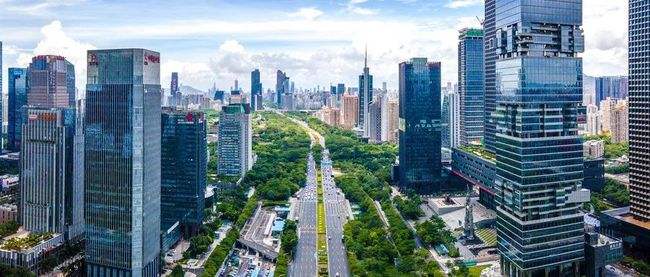The blog mainly puts forward its own views on street design under different population densities. First of all, she has her own clear views on the conditions required for a good urban street design, which is very important. Although these four principles do not completely cover the characteristics of a good street, they have a unique personal point of view.
In addition, the author also compares Shenzhen and Newcastle as a case. I think this argument is well chosen. Because Newcastle and Shenzhen have significantly different population densities, and their street forms are also significantly different. Therefore, the author’s conclusion is relatively more accurate.
Finally, the blog shows the references, which is very important. Because each of our blogs should be considered and carefully reviewed. In order to ensure the credibility and accuracy of the content of the blog.
However, the blog also has some shortcomings. For example, the principles of street design put too much emphasis on traffic functions and lack some other important things like the description of spatial scale. A good street should have a good section. For example, the ratio of sidewalk to roadway, the ratio of street width to building height on both sides. In addition, the role of architecture and landscape on streets needs to be considered. These are the contents ignored in the blog.







The blog mainly puts forward its own views on street design under different population densities. First of all, she has her own clear views on the conditions required for a good urban street design, which is very important. Although these four principles do not completely cover the characteristics of a good street, they have a unique personal point of view.
In addition, the author also compares Shenzhen and Newcastle as a case. I think this argument is well chosen. Because Newcastle and Shenzhen have significantly different population densities, and their street forms are also significantly different. Therefore, the author’s conclusion is relatively more accurate.
Finally, the blog shows the references, which is very important. Because each of our blogs should be considered and carefully reviewed. In order to ensure the credibility and accuracy of the content of the blog.
However, the blog also has some shortcomings. For example, the principles of street design put too much emphasis on traffic functions and lack some other important things like the description of spatial scale. A good street should have a good section. For example, the ratio of sidewalk to roadway, the ratio of street width to building height on both sides. In addition, the role of architecture and landscape on streets needs to be considered. These are the contents ignored in the blog.
Thank You for the interesting blog. I liked the way you have compared two very different cities in terms of density and planning. I would like to elaborate on the importance of population density on the same. Like we consider population density, we should also keep in mind that cities change with time. The realisation that things can’t be planned based on the total population is at the heart of urban planning. As a result, the focus should be on population density so that cities can expand and contract in different places. Firstly, automobiles transformed the way cities were planned, spawning new planners like Ebenezer Howard, who came up with the concept of planned garden cities for populations of 5 to 6 lakh people. Furthermore, Amsterdam, Brasilia, Chandigarh, and Navi Mumbai were planned cities by a generation of planners including Le Corbusier and others. These shared the characteristics of an automobile-dominated road network and segregated land use, with residential areas distinct from industrial, commercial, retail, and administrative regions. The second adjustment occurred when planners and administrators understood that such tight divides were dangerous, since non-residential sections were underused at night, among other issues. There is little doubt that mixed-use spaces along the streets are the way forward in our recent revolutionary approach to city design.
In addition, I would like to refer you one interesting book which sheds light on different urban streets and the changes over time. The book is called Streets, edited by Zeynep Çelik, Diane Favro, and Richard Ingersoll.
Thanks, this blog is very useful for ideas on urban street design. It also gives two classic case studies of cities with completely different population densities. It also analyses how these two cities have designed their streets according to their population densities.
A very interesting point is the analysis of the street design details in both cities. Things like pedestrian zones are divided into ‘island’ blocks where no vehicles are allowed, and then various methods, including above-ground flyovers and underground passages, are used to connect these separate islands. This is really a good way to deal with traffic in densely populated areas. Because more people means more cars. At the same time it is inevitably inconvenient for pedestrians, both for people and for cars, to simply cross the street at the traffic lights to get to the other side of the street.
But I would like to know more about the advantages and disadvantages of both ways. It would be good to have more information on this.